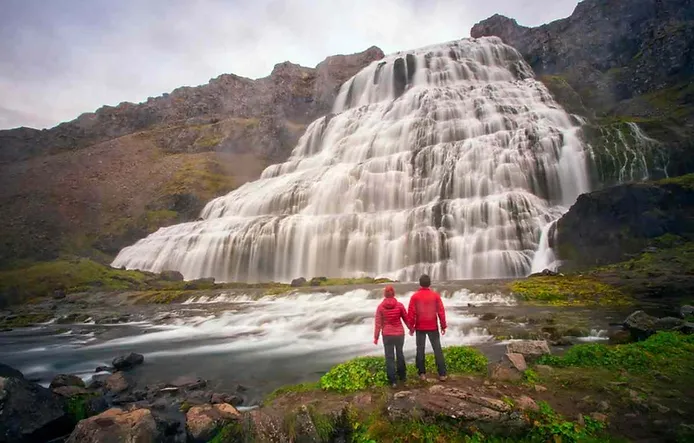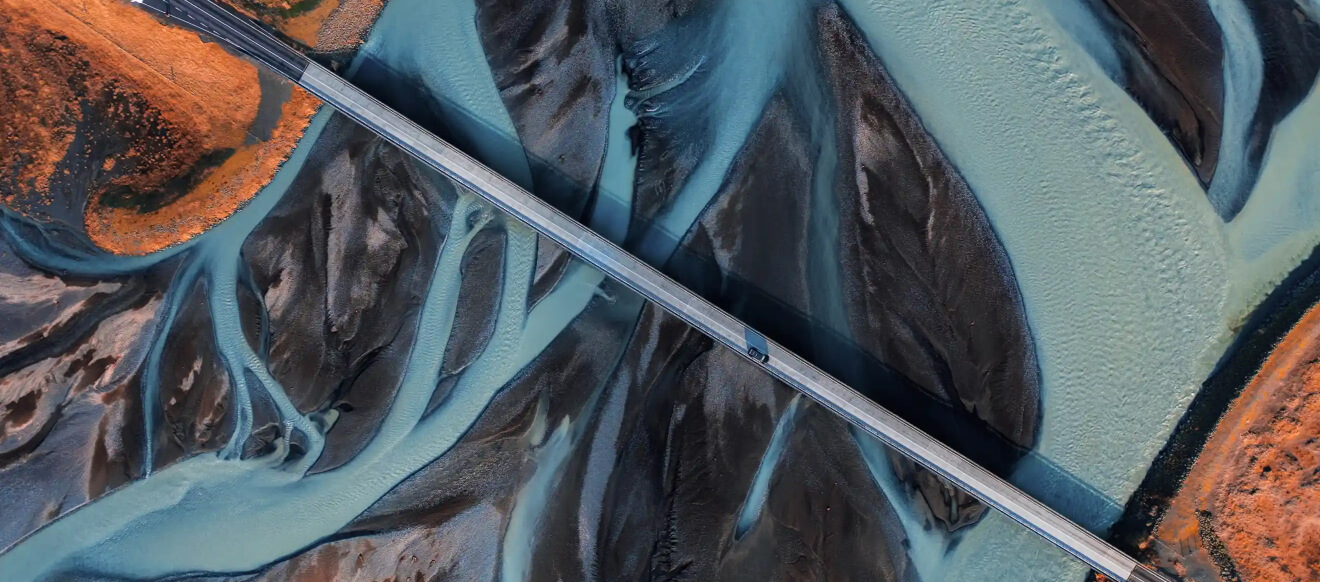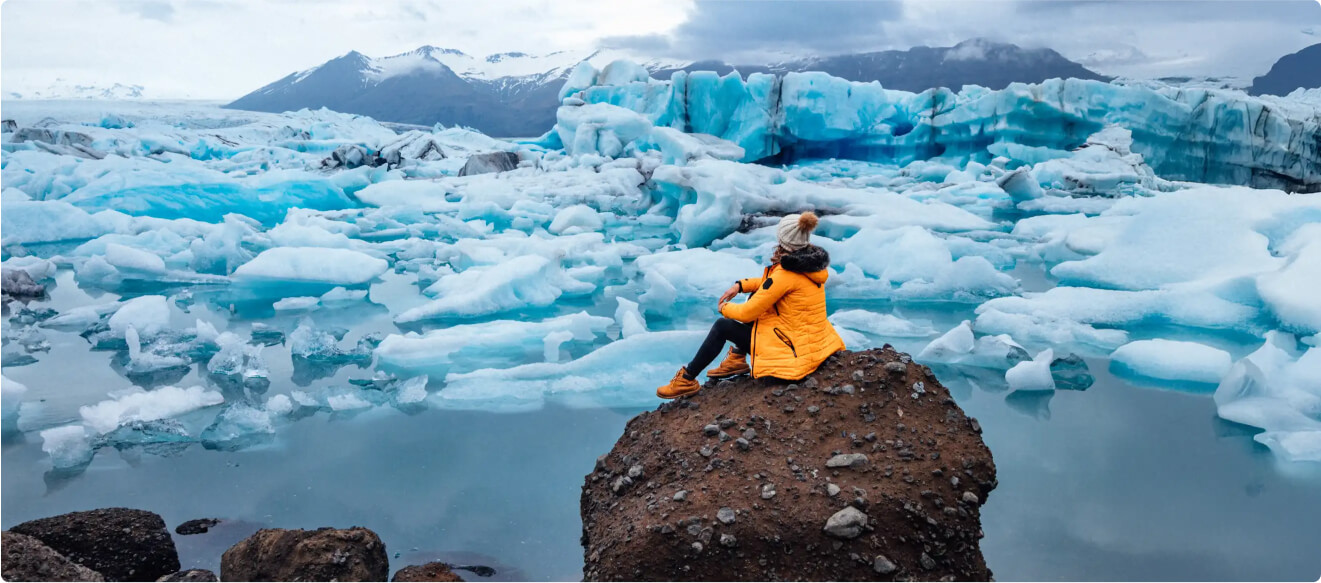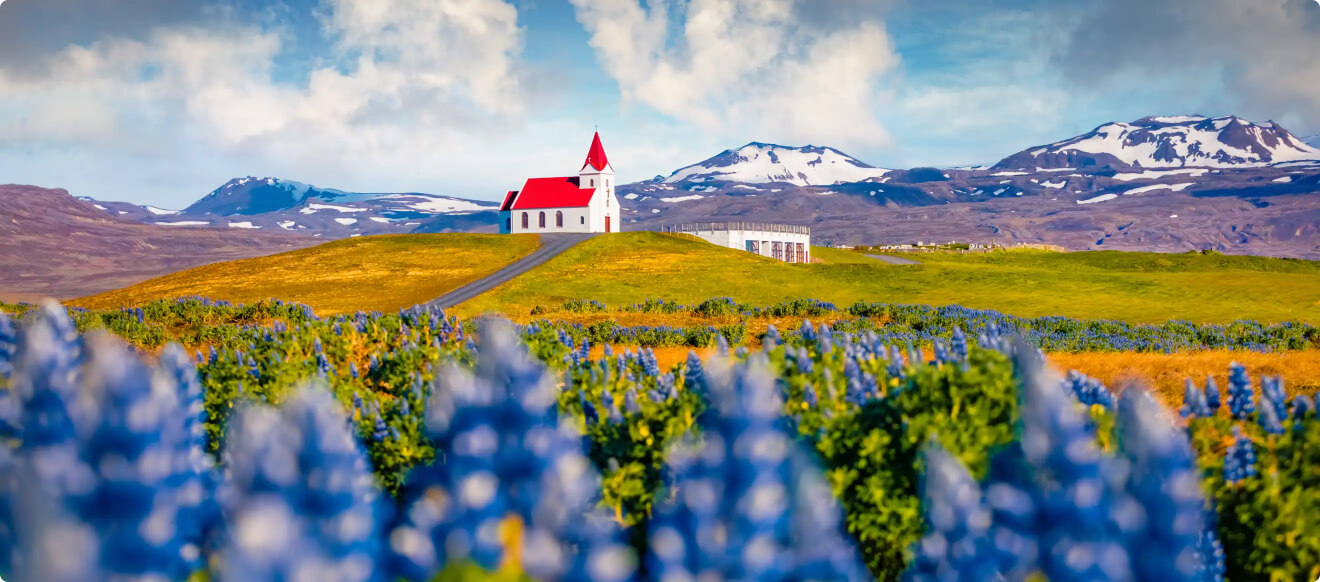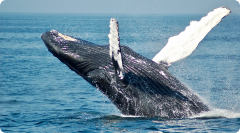With more than 10,000 waterfalls here on the island, Dynjandi Waterfall is not only beautiful and incredibly unique but has probably sparked more debate than a Rorschach Inkblot test. The question surrounding the Dynjandi Falls is what do you see?
In this article, we tell you everything there is to know about Dynjandi, how to get there, and what to expect from a visit. As far as a wedding cake or bridal veil – that will remain up to you to decide.
What Makes Dynjandi Waterfall So Impressive?
The name Dynjandi (pronounced DIN-yahn-dih) translates to ‘thunderous’. Some also call the waterfall Fjallfoss which translates to ‘mountain falls’. But whether they were trying to be descriptive of the sound of the fall or what it looks like, both these names simply do not do justice to the unique aesthetics you will encounter here.
The waterfall is 30 meters wide and 100 meters high and falls in 7 tiers to the waters below. These tiers are what spark debates as some see a tiered wedding cake as the frothy white waters tumbling over the tiers resemble white icing, whilst others see it as a bride’s white veil, flowing down her dark hair. Dynjandi is also unique in the way that it has 5 more falls below it that one can visit; Haifoss, Udafoss, Göngufoss, Hundafoss, and Bæjarfoss.
Where is Dynjandi Waterfall in Iceland?
Dynjandi can be found in Dynjandisvobur Bay at the end of the Arnafjördur Fjord in one of the most remote regions in Iceland – the Westfjords. A visit to Dynjandi Waterfall will take you about 5 hours from the capital city of Reykjavík and roughly 6 hours from Akureyri (referred to as the capital city of the north).
The little town of Isafjördur is closest to the falls and is recommended when considering doing a day trip. But with so much to see and do in the area, many make Dynjandi a stop along their Westfjords Way road trip.
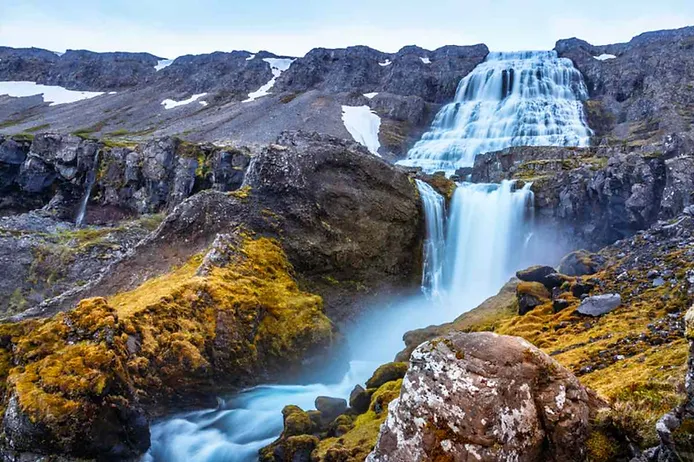
How Do You Get to Dynjandi?
There are three ways you can get to Dynjandi:
Take a Tour
You can book a tour on one of the existing tour packages offered by local tour operators, or get a guide to take you on a private tour. Just keep in mind that summer is considered the peak season here on the island, so you will need to book well in advance if you’re planning your trip during that period.
Catch a Bus
You have the option of traveling on the Westfjords Adventure Bus that runs between Isafjördur and Patreksfjördur. It does multiple runs every week and one of its stops is Dynjandi. If you get the timing just right, you’ll be able to get off at Dynjandi, do the hike to the falls and back, and still make it to the stop in time to catch the bus on its return trip. Just ensure that you don’t miss it, or you might end up stranded at Dynjandi.
Drive Yourself
We believe that this is the best way of exploring the island; not only can you truly immerse yourself in the Icelandic landscape, but you’ll have full control of your time and itinerary. And with Dynjandi located so conveniently close to the Ring Road, it makes the perfect road trip stop along the way.
To get to Dynjandi via the Ring Road, simply drive towards Route 60. This road will take you to the Westfjords and passes by Dynjandi Waterfall. Route 60 is not a paved road, and even though not legally required, we suggest you use a 4x4 vehicle.
How Long is the Walk to Dynjandi Waterfall?
The Dynjandi walking trail to reach the waterfall is not considered to be very challenging, although certain spots along the way that can get pretty rocky and steep. This is important to keep in mind when you have elderly and smaller kids in your party. The hike is 1.5 kilometers long and will take you about 40 minutes, depending on your pace.
How Much Time Do You Need for Dynjandi?
Most don’t stay for more than half an hour at the falls, but you will need to take the hiking to the falls into account as well. So, just to be on the safe side, we recommend that you give yourself at least 2 – 2.5 hours for the entire excursion.
When is the Best Time to Visit Dynjandi in Iceland?
Technically, Dynjandi Waterfall can be visited at any time throughout the year, but most prefer visiting during the warmer months of the year (between May and October). This is because the Westfjords region can get hit pretty harshly by the cold Iceland weather.
This can lead to everything from an extremely uncomfortable and challenging hike to the waterfall to dealing with tough road conditions and sudden road closures. We also recommend that you take Dynjandi on when there are still ample daylight hours in the country. Our winter months with their 4–5 hours of daylight simply won’t make the cut.
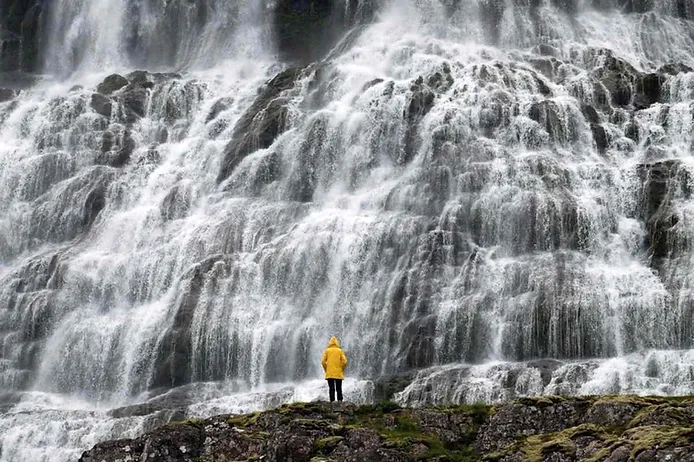
Things to Do & See at Dynjandi & its Surroundings
You will find plenty of interesting things to see and do near Dynjandi. These include:
-
Latrabjarg Cliffs (one of the best locations to go Puffin spotting in Iceland)
-
The quaint little town of Isafjördur
-
Going on the famous Hornstrandir Hike
-
Visiting the Pollurinn Hot Spring
-
Taking a stroll on Raudisandur Red Sand Beach (not a regular beach here in Iceland as we mostly have black sand beaches)
-
Check out Orlygshöfn Cove with its Golden Sand Beach (another highly irregular beach here in Iceland)
-
Visit the small fishing town of Bolungarvik (the northernmost village in the Westfjords)
Making Dynjandi a Stop on Your Drive
As we already mentioned, the best way to explore the island and visit Dynjandi Waterfall would be to make the falls a stop along a Ring Road road trip. All you need to do is rent a car in Iceland and hit the road for an adventure of a lifetime. And remember to let us know on which side of the Dynjandi debate you fall!









